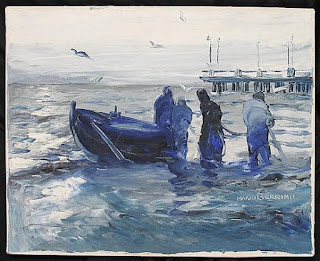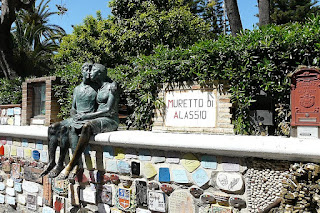Nino Cerruti - fashion designer
Turn of fate led to a life in haute couture
The fashion designer Nino Cerruti, who used the family textile business as the platform on which to build one of the most famous names in haute couture, was born on this day in 1930 in Biella in northern Piedmont. At its peak, the Cerruti brand became synonymous with Hollywood glitz and the movie industry, both as the favourite label of many top stars and the supplier of clothing ranges for a string of box office hits. Yet Cerruti might have lived a very different life had fate not intervened. Although Lanificio Fratelli Cerruti - the textile mills set up by his grandfather, Antonio, and his great uncles, Stefano and Quintino - had been the family firm since 1881, Nino wanted to be a journalist. But when his father, Silvio, who had taken over the running of the business from Antonio, died prematurely, Nino was almost obligated to take over, even though he was only 20 years old. However, despite the sacrifice of his ambitions and his studies, Cerruti threw himself into developing the business. He saw the potential in repositioning Cerruti as a fashion label and invested in a modernisation plan for the family weaving workshops in Biella as well as acquiring two further factories in Milan. Read more…
________________________________________
Agostino Bassi – biologist
Scientist who rescued the silk industry in Italy
Bacteriologist Agostino Bassi, who was the first to expound the parasitic theory of infection, was born on this day in 1773 at Mairago near Lodi in Lombardy. He developed his theory by studying silkworms, which helped him discover that many diseases are caused by microorganisms. This was 10 years in advance of the work of Louis Pasteur. In 1807 Bassi began an investigation into the silkworm disease mal de segno, also known as muscardine, which was causing serious economic losses in Italy and France. After 25 years of research and carrying out various experiments, Bassi was able to demonstrate that the disease was contagious and was caused by a microscopic parasitic fungus. He concluded that the organism, at the time named botrytis paradoxa, but now known as beauvaria bassiana in his honour, was transmitted among the worms by contact and by infected food. These findings enabled Bassi to rescue the economically important silk industry in Italy by recommending using disinfectants, separating the rows of feeding caterpillars and keeping farms clean. Read more…
_______________________________________
Zucchero Fornaciari – singer
Sweet success for writer and performer
The singer/songwriter now known simply as Zucchero was born Adelmo Fornaciari on this day in 1955 in Roncocesi, a small village near Reggio Emilia. In a career lasting more than 30 years, he has sold more than 50 million records and has become popular all over the world. He is hailed as ‘the father of the Italian blues’, having introduced blues music to Italy, and he has won many awards for his music. He has also been given the Order of Merit of the Italian Republic. As a young boy, Zucchero lived in the Tuscan seaside resort of Forte dei Marmi, where he sang in the choir and learned to play the organ at his local church. He became fond of soul music and began to write his own songs and play the tenor saxophone. He started playing in bands while studying veterinary medicine but gave up his studies to follow his dream of becoming a singer. He took the stage name of Zucchero, the Italian word for sugar, which was a nickname one of his teachers had given him. Zucchero took part in the San Remo song contest for the second time in 1985 and although his song Donne did not win, it went on to become a hit single. Read more…




.jpg)
.jpg)



.jpg)


_(cropped).jpg)





.jpg)

.PNG)



.jpg)

